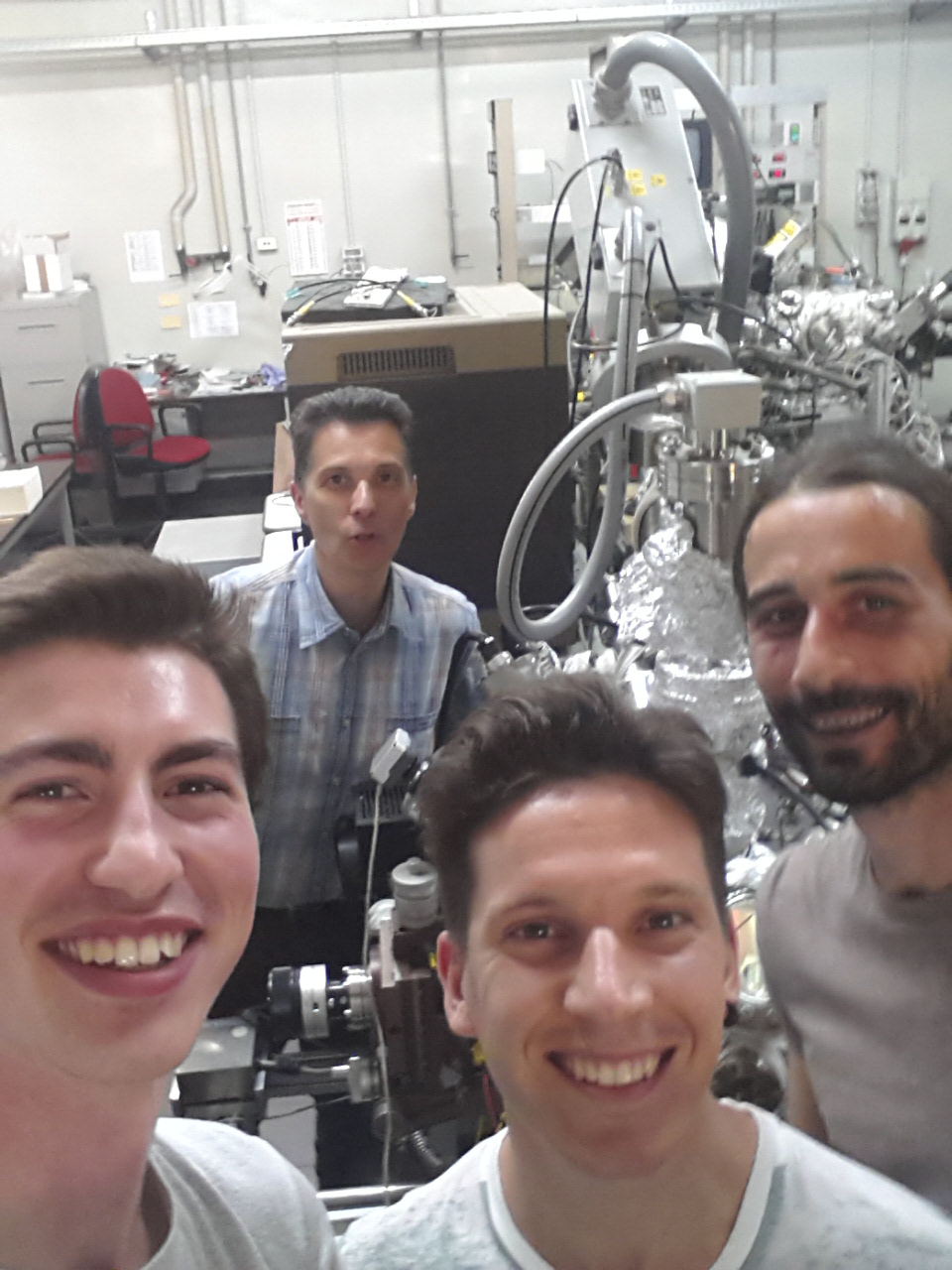Internship at the Instituto di Fisica del Plasma in Milano, Italy.
Reported by James Claxton. Powered by FuseNet.
 During the summer of 2016, I spent two months at the Plasma physics institute in Milan, doing an internship about the desorption of Helium from Tungsten.
During the summer of 2016, I spent two months at the Plasma physics institute in Milan, doing an internship about the desorption of Helium from Tungsten.
Fusion plasmas contain quite some Helium, since Helium is produced during the fusion reaction between Deuterium and Tritium. Unfortunately, Helium also dilutes the plasma, which is why it has to be removed from the fusion plasma through the divertor, which acts as the tokamak's exhaust pipe.
Tungsten can release Helium back into the plasma
In this divertor region, the plasma facing components are bombarded by Helium particles and a part of this particle flux is being absorbed into the Tungsten material (Tungsten is the main component of EuroFer, which is used in Tokamaks such as ASDEX and JET). A fraction of these absorbed Helium particles, will eventually go back into the plasma through desorption. As such, the Tungsten components play an important role in limiting the influx of Helium particles back into the plasma. Therefore, the aim of my experiment was to examine how the heating rate affects the influx of Helium impurity via desorption.
Ultra High Vacuum needed before experiments could start
Before I could start any experiments, however, I had to learn about vacuum technology, because the plasma experiments in the lab require UHV (ultra-high vacuum). This vacuum is reached using two types of pumps: the first of which is the mechanical pump (or rotary pump) which pumps air using a rotor and a stator, and the second pump is the turbo pump. Since particles no longer interact with each other at pressures of approximately 10-2 mbar, the flow of particles changes from a viscous flow to a molecular flow. In molecular flow the movement of particles is governed by probability and they do not feel the presence of the pump. Therefore, to get a better vacuum, the turbo pump has angled blades, similar to the blades of a jet engine, to force the particles out of the chamber. After a few days of pumping the chamber will reach a pressure of 10-9 or 10-10 mbar.
Building a setup to measure desportion of Helium
In order to measure the desorption of Helium, I used a mass spectrometer to collect the desorbed particles. However, before any real samples could be tested, the pressure gauges and the Mass Spec had to be calibrated, because a Mass Spec only counts the number of helium particles and doesn’t give an actual pressure. The calibration was done by leaking helium into the chamber and recording the pressure, while the Mass Spec counted Helium particles.
Moreover, since no pressure gauge can measure the whole pressure spectrum from 1000 mbar down to 10-10 mbar, the measurements of different gauges had to be calibrated. At the high pressure end, a spinning rotor gauge has been used which measures the drag of a gas across a spinning ball. As the pressure decreases, however, the drag imparted on the ball becomes too small to be measured and therefore other gauges were needed, an example of which is the Bayard-Alpert gauge. Within this pressure gauge, gas is ionised and the ions are subsequently collected. The display of the gauge will tell you a pressure, but it does not reflect the true pressure of your gas. To have any physical meaning, the measurements of the ionic gauge are calibrated with the measurements of the Spinning rotor at a pressure of around 10-5 mbar, since both gauges could be used at this pressure.
Finally, time for an experiment...
After all calibrations were completed, I could finally test my Tungsten-Helium samples. In order to do so, the Tungsten samples were inserted into the vacuum chamber and heated to a temperature of 915 Kelvin by a filament, releasing the Helium in the process. The heating rate was different for the four identical samples and controlled by a PID (Proportional Integral Differential) controller, which could increase the sample temperature very precisely at a pre-determined rate.
Partially counter-intuitive results
The results of my experiment showed that more Helium is desorbed when the samples were heated faster, which was contrary to what I expected. I predicted that a relatively low heating rate would mean that the Helium would have more time to desorb from the sample. Furthermore, I did see another effect: the desorption peak moved between different rates, which was in agreement with my predictions, since I expected that a lower rate would have a peak at a lower temperature.
Helium disorped, real work-experience absorbed!
Getting hands-on experience with cold plasmas and instruments, such as pressure gauges and vacuum systems, has been very beneficial to me. I feel that it will be very useful for a possible future career in plasma and fusion physics research. I also found that being in a real working environment has helped me to understand the key difference between university experiments and real lab experiments and I am very grateful to all the staff members at the plasma lab in Milan and to FuseNet for their support.
